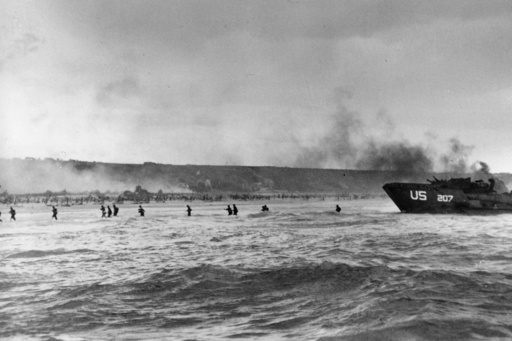OMAHA BEACH, France (AP) — A brief timeline of events on D-Day, June 6, 1944.
Shortly after midnight: More than 2,200 Allied aircraft begin bombing German defenses and other targets in Normandy. They are followed by 1,200 aircraft carrying more than 23,000 American, British and Canadian airborne troops. British forces landing in gliders take two strategic bridges near the city of Caen. The force commander uses the codewords “ham and jam” to report the successful capture.
1:30 a.m.: U.S. 101st Airborne Division begins landing behind the most western of the five landing beaches, codenamed Utah.
2:30 a.m.: U.S. 82nd Airborne Division also lands but many units are scattered.
5 a.m.: Allied naval forces begin shelling German coastal defenses.
6:30 a.m.: Beach landings begin.
How D-Day progressed on the five beaches:
Utah: Assaulted by U.S. forces. This beach saw the fewest Allied casualties: 197 troops killed or wounded among 23,000 that land.
Omaha: The longest, most heavily defended and bloodiest beach. U.S. forces suffer 2,400 casualties but still land 34,000 troops by nightfall.
Gold: Taken by British forces, which land 25,000 soldiers and push German forces inland, for 400 casualties.
Juno: Joint Canadian-British assault lands 21,000 troops; more than 1,150 casualties.
Sword: Assisted by French and British commandoes, the British 2nd Army takes the easternmost beach, landing 29,000 soldiers for 630 casualties.
——
Sources: U.S. Defense Department, the White House, Juno Beach Center, Imperial War Museum, National Army Museum
This website uses cookies so that we can provide you with the best user experience possible. Cookie information is stored in your browser and performs functions such as recognising you when you return to our website and helping our team to understand which sections of the website you find most interesting and useful.
